A little history
Lancia kept the highly innovative Lambda in production during the whole Twenties, and even if this car could still be considered modern by the early Thirties, decided to remain one step ahead of its competitors by introducing its successor, the Artena, during the 1931 Paris motor show. As for the Dilambda, a “super-Lambda” of sorts, it gave way to the Astura.
Though the Artena was powered by a V4 as the Lambda had been, a 2.6-litre V8 was designed for the Astura. The job was so cleverly done by Lancia’s engineering team that the larger block could fit in the very same chassis as the smaller one, while most cars of the time would require different wheelbases in order to accommodate their diverse engines. Rather squarish and unexciting, fully-bodied cars were available from the factory but, particularly in the case of the top-of-the-line Astura, many new vehicles were sold as bare chassis, then sent to various coachbuilders who finished the construction. Farina designed a huge number of the custom-built Lancias, while a non-negligible quantity was penned by Castagna.
Two series of the larger Lancia were built up to 1933, when a third evolution (Astura 233) was introduced, now offered in two wheelbase lengths (the shorter one being roughly the same size as the second series’ platform, while the new extended chassis provided more freedom to the coachbuilders working on the Astura). The engine was also enlarged to 3.0-litre, now providing 82 bhp, enough to bring the heavy car to 130 kph. The “233” remained available until 1937, when the fourth and final Astura series was introduced. Now undisputedly a luxury car, this “Astura 241” had an even longer wheelbase, well suited for limousines and coupes de ville, though the Stabilimenti Farina skilfully designed superb roadsters and coupes fitting to its huge chassis.
Despite the fact that the 1.9-litre Artena had been retired in 1936, its bigger sister the Astura lingered until 1939. The story of these two fine automobiles wasn’t totally over, though. The needs of the fascist regime drove Lancia into resuming the Artena’s production in 1940. During the next two years, more than five hundred additional cars were constructed to cater for officials and to serve as ambulances. In 1942, two Asturas were also built. The worthy heirs of the Lambda then left for good.
About the models
Model: Lancia Astura, body by Farina
Year: 1934
Maker: Ixo
Scale: 1/43
Distributed by: Altaya as no.16 of its Voitures Classiques press series
Acquired: brand new, in August 2006, in Souillac, France
First comes a model produced by Ixo for Altaya. Of all the many custom bodies drawn for the Astura, Ixo opted for a Farina convertible, probably because it was one of the most popular among the non-standard designs. Despite a brilliant two-tone paint, this version nonetheless seems somehow bashful when compared to the astonishing creations Farina later produced for the fourth series. Details are many, but not necessarily reproduced with the highest degree of subtlety. In particular, doors look particularly unrealistic. Overall this model can be considered a slightly below-par offer among the large Voitures Classiques collection, worth 11/20.

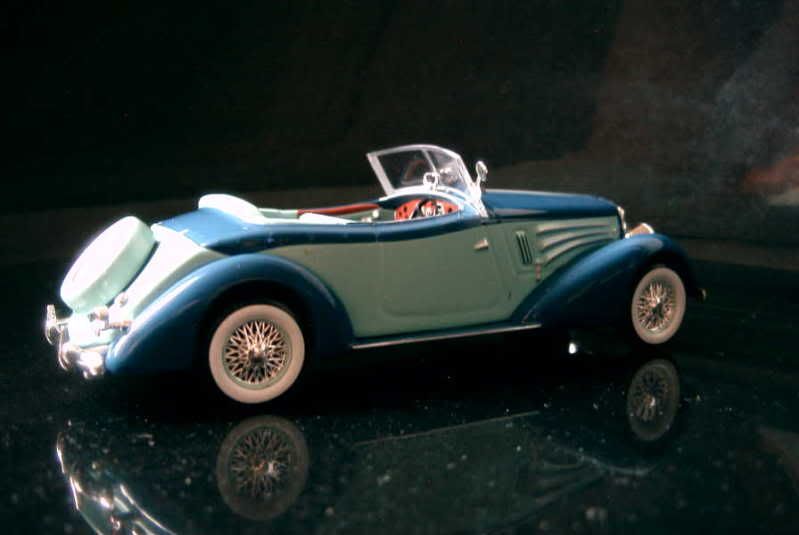
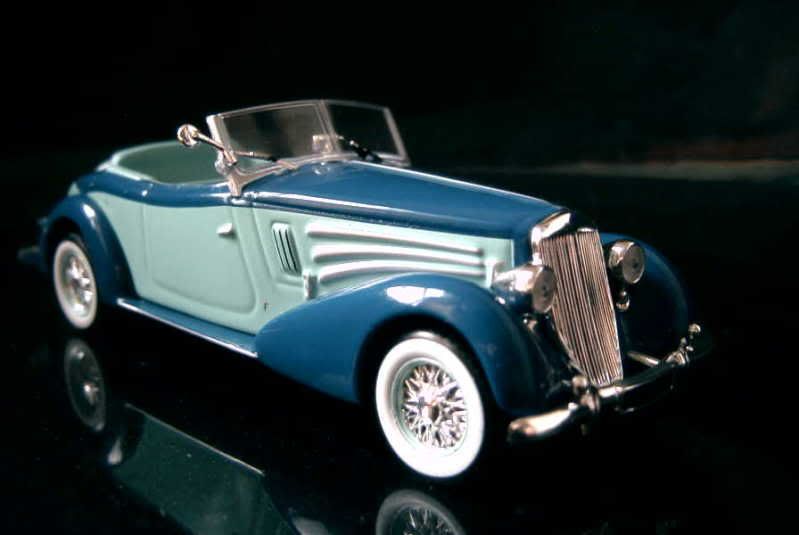
Model: Lancia Astura Gran Lusso, body by Farina
Year: 1935
Maker: Solido
Scale: 1/43
Distributed by: Solido, “Âge d'Or” series ref. 4169
Acquired: brand new, in July 2003, in Brive, France
Once a great name in the industry, Solido now seems to have fallen into the deepest of sleeps for many years. Most of the pre-war classics the French brand proposes are models left unchanged since the Sixties, sometimes removed from production only to be reintroduced later, which obviously don’t compare favourably when faced with recent die-casts. There are some exceptions, though. In 2000, Solido released one of its best models in years, a superb Astura, that is so nicely reproduced that I’m still wondering if this model, built in China rather than in France, couldn’t have been a Detail Cars’ project on which Solido put his hands after the Italian company’s collapse. This said, back to the model itself. Based on a Farina-bodied coupe still extant today, it not only benefits from a very accurate design incorporating many separate parts (though the windshield wipers are unfortunately reproduced the old way - moulded with the windshield), but also from excellent workmanship, which is not always the case with the brand’s other products. A 14/20 mark seems fully justified – for a moment I even considered giving more than this.
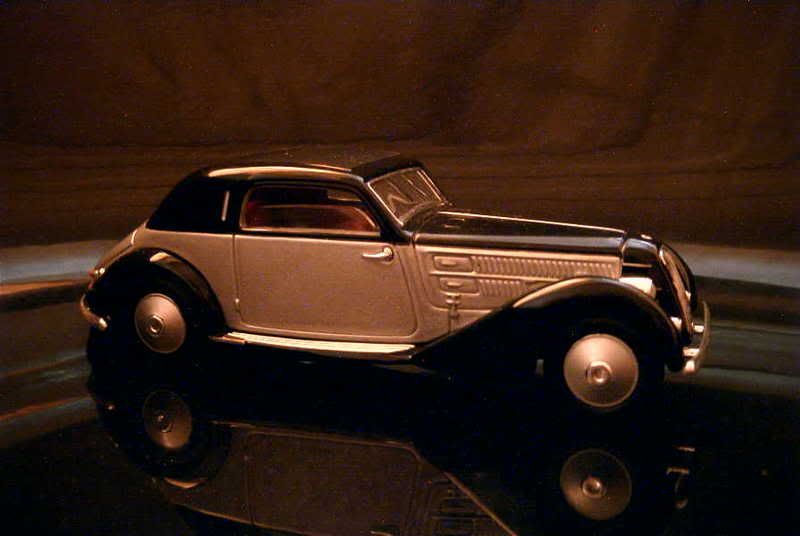
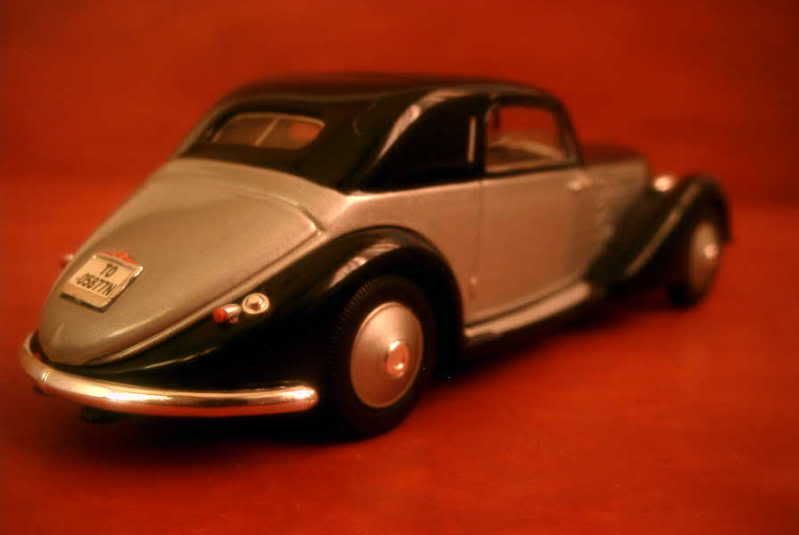
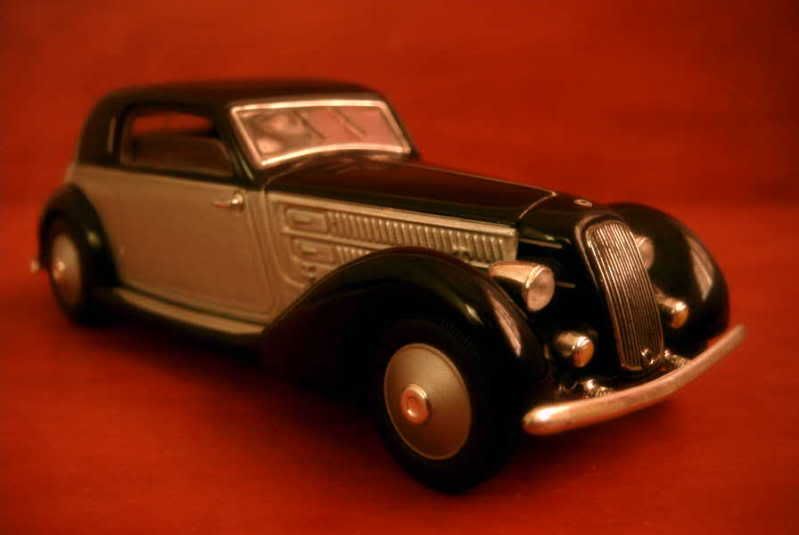
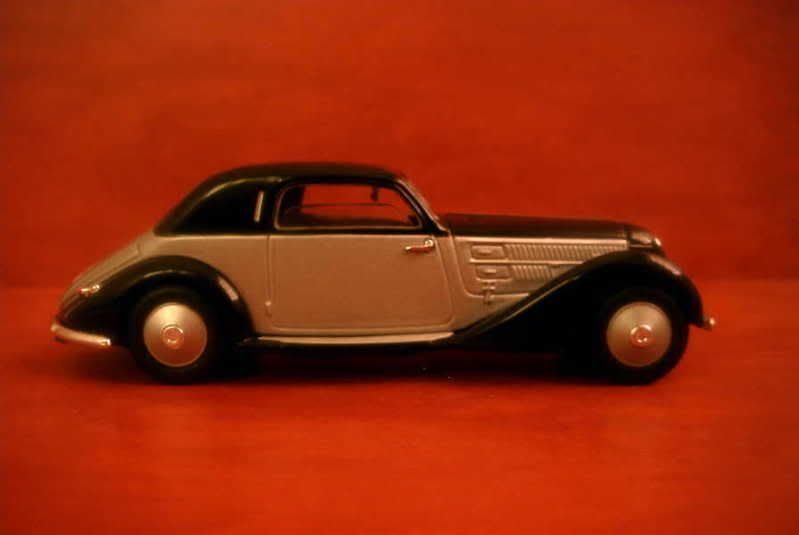
Lancia kept the highly innovative Lambda in production during the whole Twenties, and even if this car could still be considered modern by the early Thirties, decided to remain one step ahead of its competitors by introducing its successor, the Artena, during the 1931 Paris motor show. As for the Dilambda, a “super-Lambda” of sorts, it gave way to the Astura.
Though the Artena was powered by a V4 as the Lambda had been, a 2.6-litre V8 was designed for the Astura. The job was so cleverly done by Lancia’s engineering team that the larger block could fit in the very same chassis as the smaller one, while most cars of the time would require different wheelbases in order to accommodate their diverse engines. Rather squarish and unexciting, fully-bodied cars were available from the factory but, particularly in the case of the top-of-the-line Astura, many new vehicles were sold as bare chassis, then sent to various coachbuilders who finished the construction. Farina designed a huge number of the custom-built Lancias, while a non-negligible quantity was penned by Castagna.
Two series of the larger Lancia were built up to 1933, when a third evolution (Astura 233) was introduced, now offered in two wheelbase lengths (the shorter one being roughly the same size as the second series’ platform, while the new extended chassis provided more freedom to the coachbuilders working on the Astura). The engine was also enlarged to 3.0-litre, now providing 82 bhp, enough to bring the heavy car to 130 kph. The “233” remained available until 1937, when the fourth and final Astura series was introduced. Now undisputedly a luxury car, this “Astura 241” had an even longer wheelbase, well suited for limousines and coupes de ville, though the Stabilimenti Farina skilfully designed superb roadsters and coupes fitting to its huge chassis.
Despite the fact that the 1.9-litre Artena had been retired in 1936, its bigger sister the Astura lingered until 1939. The story of these two fine automobiles wasn’t totally over, though. The needs of the fascist regime drove Lancia into resuming the Artena’s production in 1940. During the next two years, more than five hundred additional cars were constructed to cater for officials and to serve as ambulances. In 1942, two Asturas were also built. The worthy heirs of the Lambda then left for good.
About the models
Model: Lancia Astura, body by Farina
Year: 1934
Maker: Ixo
Scale: 1/43
Distributed by: Altaya as no.16 of its Voitures Classiques press series
Acquired: brand new, in August 2006, in Souillac, France
First comes a model produced by Ixo for Altaya. Of all the many custom bodies drawn for the Astura, Ixo opted for a Farina convertible, probably because it was one of the most popular among the non-standard designs. Despite a brilliant two-tone paint, this version nonetheless seems somehow bashful when compared to the astonishing creations Farina later produced for the fourth series. Details are many, but not necessarily reproduced with the highest degree of subtlety. In particular, doors look particularly unrealistic. Overall this model can be considered a slightly below-par offer among the large Voitures Classiques collection, worth 11/20.



Model: Lancia Astura Gran Lusso, body by Farina
Year: 1935
Maker: Solido
Scale: 1/43
Distributed by: Solido, “Âge d'Or” series ref. 4169
Acquired: brand new, in July 2003, in Brive, France
Once a great name in the industry, Solido now seems to have fallen into the deepest of sleeps for many years. Most of the pre-war classics the French brand proposes are models left unchanged since the Sixties, sometimes removed from production only to be reintroduced later, which obviously don’t compare favourably when faced with recent die-casts. There are some exceptions, though. In 2000, Solido released one of its best models in years, a superb Astura, that is so nicely reproduced that I’m still wondering if this model, built in China rather than in France, couldn’t have been a Detail Cars’ project on which Solido put his hands after the Italian company’s collapse. This said, back to the model itself. Based on a Farina-bodied coupe still extant today, it not only benefits from a very accurate design incorporating many separate parts (though the windshield wipers are unfortunately reproduced the old way - moulded with the windshield), but also from excellent workmanship, which is not always the case with the brand’s other products. A 14/20 mark seems fully justified – for a moment I even considered giving more than this.







No comments:
Post a Comment